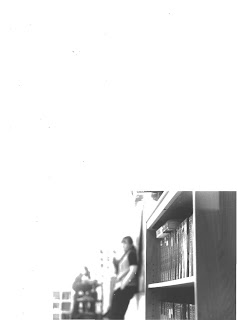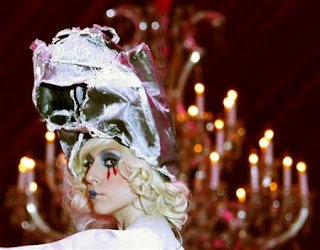1.) Take the film out of the cassette In total darkness. Remove the film from the cassette by pulling the flat end off with a can opener and unwinding the film from the spool by peeling off the tape holding it.
2.) Then you have to load the film into plastic film reel, for beginners. Than you slide one end of the film into a slot on the outer edge of the reel and "walk" the film in until it is gone. Metal reels are harder because they need a higher degree of dexterity.Following the instructions that come with the tank, you might want to practice loading a reel in the day light with film you dont plan to use. So you can get a feel for it.
You might mess up so try not to use important film the first time you try.
3.) Put the reel in the film tank and cover it securely. You can now turn on the light.
"Soup" Time
When you are ready to process your film lay out the chemicals in front of you: a film developer, stop bath, and a fixer with hardener, and a *hypo eliminator bath.
4.) Make sure to carefully control the tempereature of the chemicals. The developing time depends on: the speed of the film and the temperature of the chemicals. The best temperature to keep these chemicals is 68-70 degrees. You can develop at slightly higher and lower temperatures as long as you make adjustments depending on the brand, but each company gives recommended processing times and temps on the packaging.
High temperatures could cause "*reticulation", which gives film a coarse, overly-grainy appearance. This can be an interesting effect to play with, but if not if you're trying to get the best negative possible.
5.) Now you pour developer into the pour spout, and cover it. Do not open the tank! To keep fresh chemical on the film surface, turn the tank upside down once a minute briefly. When it is upright again, tap it several times against your work surface to remove any air bubbles that might form, the bubbles will make dark under-developed spots on negatives.
Develop film for the time recommended on the packaging. When done, take the lid off the tank's pour spout and pour it out.
6.) Pour water into the pour spout for one minute to stop development. Or mix a small amount of *Glacial Acetic Acid with water and let the film sit in that for 30 seconds to wash off the developer. This is a stop bath.
7.) To now fix the image so you can view it in normal light use the fixer with hardener. This will help you help protect the negative from getting easily scratched. Fixing the film should take 5-10 minutes, depending on if you used a normal or rapid fixer.
8.) Now you can remove the tank cover completely, and let the film sit in cold running water for five minutes.
9.) Then to remove all traces of the fixer pour in a tankful of *Hypo Eliminator and agitate for two minutes.
10.) Run the film under cold water again.
11.) Take the film out of the tank. And never touch the surface of the negatives. Use washing pins or film clips to hang the film to dry.
12.) In 1-2 hours, the film will be dry. Use scissors to cut the film into strips, six negatives long. Be careful to not cut the pictures. Store the negatives in clear glassing envelopes or PVC plastic negative pages.
Definitions
*
Reticulation- the formation of a network of cracks or wrinkles in a photographic emulsion.
*
Acetic Acid- CH3COOH, also known as ethanoic acid, is an organic acid which gives vinegar its sour taste and pungent smell.
*
Hypo Eliminator- Bath used after fixer bath and intermediate wash to remove fix from film or print.












